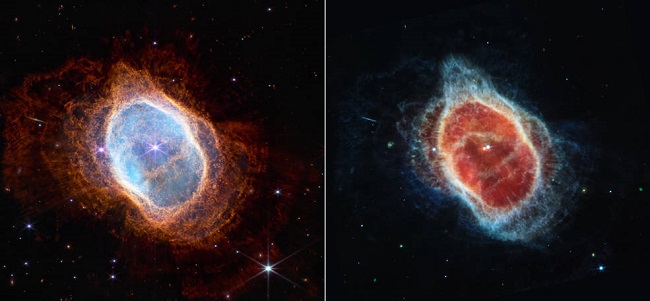The world has been captivated this week by photos taken by the James Webb telescope.
James Durbano with the Big Sky Astronomical Society says people were impressed years ago when the Hubble space telescope sent back pictures but this is much better.
"The fact that they're so beautiful and nice and crisp and in focus means the telescope is working the way it's meant to be working, which is wonderful because as you may recall many years ago, 32 years ago when the Hubble space telescope launched it had a little problem that they discovered shortly after it started sending back it's first photographs, it was out of focus and needed a sort of set of eye glasses to bring it into focus which they were able to do. But this telescope, the Webb space telescope is working perfectly, all the images are nice and clear and sharp and wonderful, " he says.
He explains the Webb has a bigger mirror than Hubble and because of the bigger mirror it's able to reflect more light and see things with a higher resolution which makes it about 100 times more powerful than Hubble and showing things that the Hubble just couldn't see.
One of those is the details in the first photograph released Monday by U.S. President Joe Biden.
"It was showing some gravitational lensing which is a really neat thing, it allows you to see way, way back to the kind of beginning of time, back to the very distant reaches of the universe and the way that works is because light can be bent by incredibly massive objects that have a lot of gravity and so the photograph that was released Monday you'll see that there are some blobs of light that are galaxies, and they're kind of bent and circular in nature and that's the gravitational lensing that I'm talking about," Durbano explains. "Because of the way the light is bending around the nearby galaxies they're being bent into view and you're sort of being able to see behind them and they have this sort of circular nature to them, if you look carefully there's many of them and they all form arcs and if you look carefully all those arcs kind of line up into a circle and so it's quite incredible that you can see so far back in time."
He says the Stephen's Quintet photo shows where galaxies are interacting with each other, showing where gas is being pulled around from one to another and stars are being stretched out as the four galaxies interact one another.
Durbano says the Corina Nebula shows what he believes is a solar system in the making.
On the upper left hand side of the photo there's a small blip where he says almost certainly a new baby star is being born.
"But it won't just be a star it'll almost certainly have planets that are being formed inside there, so that is the home of a future star system and there are several of those in that big cloud of gas and dust, that's the most obvious one," he says.
Durbano says while this is a NASA spacecraft its not just NASA that was involved.
"I do want to point out that the Canadian Space Agency is a partner on this telescope as is the European Space Agency, in fact there were literally thousands of scientists and engineers and technicians from 15 countries who contributed to design and build and test and launch and now operate the James Webb telescope, he says.
He says the six-point stars seen in the photos are, relatively speaking, nearby stars in the foreground and we'll see a lot of them over future years when the Webb sends back pictures.
It's been over 30 years since the Hubble was shot skyward and Durbano wonder what we may see from telescopes built 30 years into the future.
 Carina Nebula
Carina Nebula
 First photo released by NASA, ESA, CSA and STScl
First photo released by NASA, ESA, CSA and STScl
 Southern Ring Nebula (Photo: NASA, CSA, ESA, STScl)
Southern Ring Nebula (Photo: NASA, CSA, ESA, STScl)


